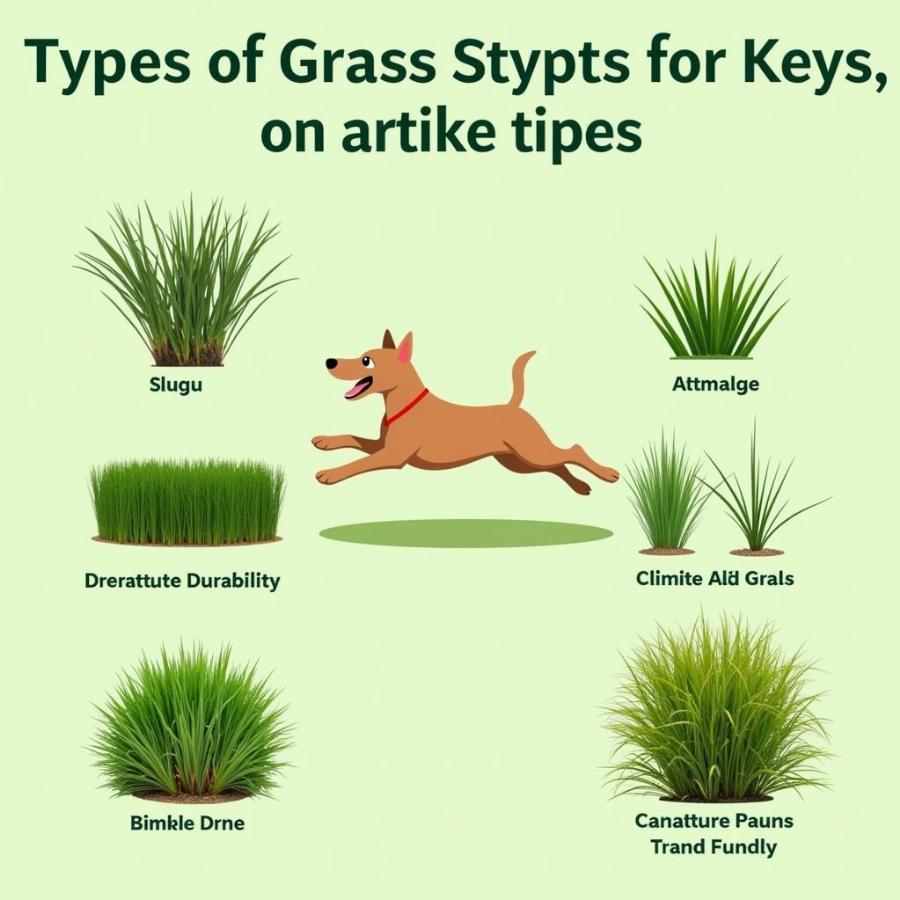Maintaining a lush green lawn can feel like a constant battle when you have furry friends running around. The good news is, having a beautiful lawn and happy dogs is absolutely achievable. This article will explore practical strategies for how to grow grass with dogs, covering everything from selecting the right grass type to repairing damaged areas and training your dog for lawn harmony.
Choosing the Right Grass for Dog Traffic
The first step to a dog-friendly lawn is choosing a durable grass variety. Some grasses are simply tougher than others and can withstand the wear and tear of playful paws. Consider these resilient options:
- Bermuda Grass: Known for its rapid growth and ability to recover quickly from damage, Bermuda grass is a popular choice for dog owners.
- Zoysia Grass: A dense, wear-resistant grass that can tolerate heavy foot traffic.
- Kentucky Bluegrass: While not as tough as Bermuda or Zoysia, Kentucky Bluegrass is a good option for cooler climates and can hold up reasonably well to dog activity.
- Ryegrass: A fast-growing option ideal for overseeding damaged areas, providing quick coverage and reinforcement.
 Choosing the Right Grass for Your Dog
Choosing the Right Grass for Your Dog
Repairing Dog-Damaged Areas
Even the toughest grass can suffer damage with consistent dog traffic. Here’s how to repair those pesky bare spots:
- Rake: Remove any dead grass and debris from the affected area.
- Aerate: Loosen the soil with a garden fork or aerator to improve drainage and encourage root growth.
- Overseed: Spread grass seed generously over the bare patch. Ryegrass is an excellent choice for quick coverage.
- Topdress: Cover the seeds with a thin layer of topsoil or compost.
- Water: Water regularly, keeping the soil moist but not soggy, until the new grass is established.
Training Your Dog for Lawn Harmony
Training your dog to be more lawn-conscious can significantly reduce damage.
- Designated Potty Area: Train your dog to use a specific area of your yard for their business. This concentrates the nitrogen impact and makes cleanup easier.
- Hydration: Ensure your dog has access to plenty of fresh water. Dehydration can lead to concentrated urine, which can scorch the grass.
- Dietary Considerations: A balanced diet can contribute to healthier digestion and less damaging urine. Consult with your vet about the best food options for your dog.
Does Dog Urine Kill Grass?
Yes, dog urine, particularly from female dogs, can kill grass due to its high nitrogen content. This creates brown patches on your lawn.
What is the Best Grass for High Traffic and Dogs?
Bermuda and Zoysia grasses are generally considered the best options for high traffic areas and dog-friendly lawns due to their durability and quick recovery.
Maintaining a Healthy Lawn with Dogs: Additional Tips
- Regular fertilization and mowing are essential for overall lawn health.
- Consider using dog-safe fertilizers and herbicides.
- Rotate dog play areas to allow different sections of your lawn to recover. dog has allergies to grass
- Consider installing pathways or ground cover in high-traffic areas. best ground cover for dogs
Conclusion
Growing grass with dogs requires a combination of choosing the right grass, proper maintenance, and a little bit of training. By following the advice in this article, you can achieve a healthy, beautiful lawn that both you and your furry friends can enjoy. Remember, a little effort can go a long way in creating a dog-friendly outdoor space. safest weed killer for dogs
FAQ
- Can I use any type of fertilizer on a dog-friendly lawn? No, it’s crucial to use dog-safe fertilizers.
- How often should I water my lawn if I have dogs? Water deeply and less frequently to encourage deep root growth. Adjust watering frequency based on climate and rainfall.
- Why does my dog eat grass? Dogs eat grass for various reasons, including upset stomachs, boredom, or nutritional deficiencies. dog’s stomach making noises and eating grass
- What can I do if my dog digs holes in the lawn? Provide plenty of toys and mental stimulation to reduce boredom digging.
- Are there any alternatives to grass for dog-friendly yards? Yes, options include artificial turf, clover, and ground cover.
Beaut Dogs is your one-stop resource for all things dog-related, offering reliable information and expert advice on a variety of breeds and their care. When you need assistance, email us at [email protected] for detailed and accurate answers. Beaut Dogs is committed to providing valuable knowledge to the dog-loving community. Visit https://beautdogs.com today!